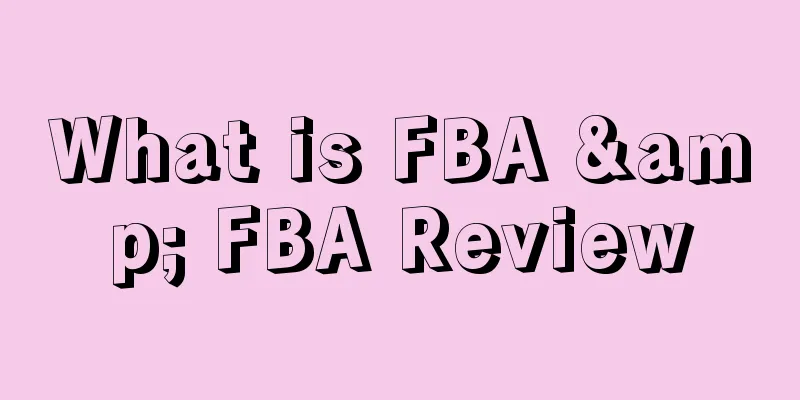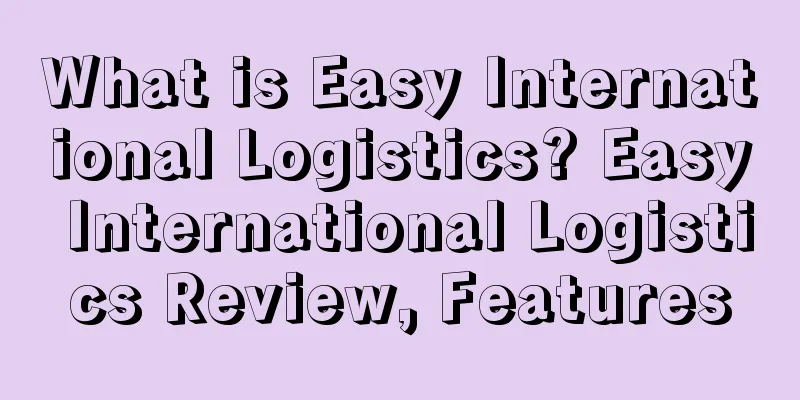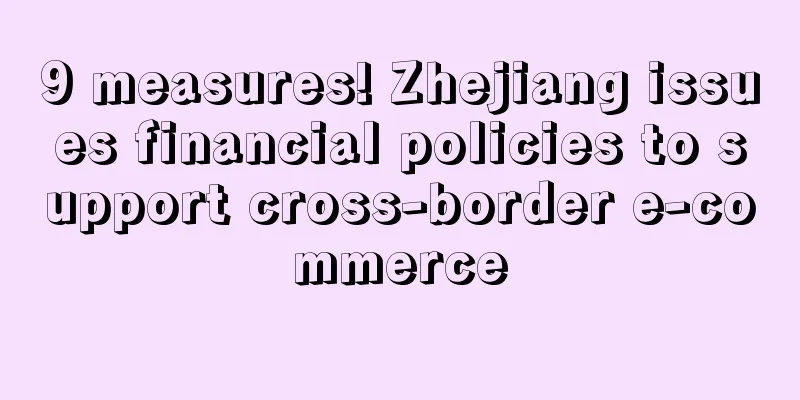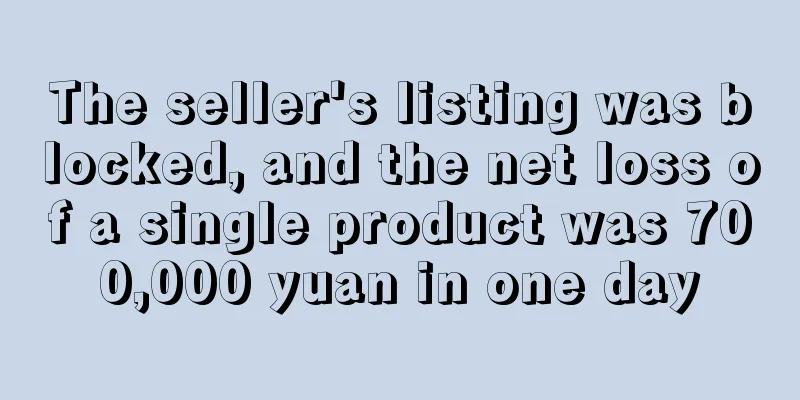What is FBA & FBA Review

|
FBA stands for Fullfillment By Amazon, and its official Chinese name is Amazon Logistics and Delivery Service. It is a consignment delivery service created by Amazon in 2007, which means that sellers prepare goods in Amazon warehouses in advance, and after customers place orders, the Amazon system automatically completes the subsequent delivery. It includes one-stop logistics services such as warehousing, picking, packaging, delivery, collection, customer service and return processing, and charges a certain service fee.
Procedure Step 1: Send the goods to Amazon sellers Send new or second-hand goods for sale to Amazon overseas logistics centers. 1. Upload product information to the seller platform; 2. Let Amazon deliver all or part of your inventory; 3. Print the PDF label provided by Amazon or use the Amazon Logistics Labeling Service; 4. Use Amazon’s discounted shipping or choose your own carrier. Step 2: Amazon stores the seller's products in Amazon's inventory ready for sale, registering and storing all received products. 1. Amazon categorizes the products and stores them in ready-to-ship inventory. 2. Amazon receives and scans the seller’s inventory; 3. Record product dimensions for storage; 4. Monitor your inventory through Amazon’s integrated tracking system. Step 3: The customer places an order to purchase the product. 1. Customers order products using FBA on the Amazon platform; 2. Amazon will deliver orders, including orders placed directly on Amazon.com or delivery requests submitted by sellers that are not sold on Amazon. 3. Since orders with a total value of more than $35 qualify for free shipping, the items will be sorted by the item price excluding shipping costs; 4. Amazon Prime members can update the delivery settings of eligible Amazon logistics products. (Note: does not include multi-channel delivery orders from other websites and services including Amazon Webstore and Checkout by Amazon) Step 4: Amazon sorts and packages the goods sold. 1. Amazon Logistics sorts and packs the seller's products from inventory and prepares them for delivery; 2. Amazon uses our advanced website to warehouse, high-speed sorting and classification system to locate sellers' products; 3. Buyers can combine sellers’ orders with other products shipped by Amazon; Step 5: Amazon delivers the goods. Amazon delivers the goods from the logistics center to the customers. 1. Amazon sellers deliver their products from the operation center network to buyers; 2. Amazon delivers the buyer's order using the delivery method selected by the buyer and provides tracking information to the buyer; 3. For orders placed on Amazon.com, buyers can contact Amazon for customer service.
FBA Advantages 1. Improve the listing ranking, help sellers become featured sellers and obtain shopping carts, improve customer trust, and increase sales; 2. Years of rich logistics experience, warehouses all over the world, and intelligent management; 3. The delivery time is fast and guaranteed, and most warehouses are built near airports; 4. Enjoy Amazon's professional customer service; 5. Reduce negative reviews and disputes caused by logistics; 6. For products with a unit price of more than 300 USD, all FBA logistics fees are waived.
FBA Disadvantages 1. Sellers are required to prepare the goods in the warehouse designated by Amazon in advance, and sellers need to solve the first-leg problem by themselves. 2. The overall cost is relatively high. Compared with the cumulative cost of self-delivery and overseas warehouses, the cost of FBA will be higher. This is because sellers need to pay a series of related fees such as Amazon logistics and warehousing. 3. Poor flexibility. FBA can only communicate with customer service in English, and because of time differences and different working habits, the efficiency of replying and handling problems is not very high. FBA is only available to sellers on the Amazon platform, and the backend defaults to warehouse division, which will divide the seller's products into different warehouses. In this way, sellers can only send them to different warehouses separately, which increases costs. 4. Label issues affect delivery. As sellers, we all know that Amazon product labels are required when shipping to FBA warehouses, so that Amazon can scan and put the products on the shelves, sort and deliver them after receiving them. If there is an error or damage to the product label, the product cannot be put on the shelves. 5. The handling of return and exchange issues is biased towards customers. Amazon supports customers to return and exchange products unconditionally, but the FBA warehouse will not conduct any further inspections on the returned products. Even if the returned products have no quality problems, Amazon will not put the products on the shelves for sale again. If the product is returned, whether it is destroyed or sent back to the seller, Amazon will charge an additional fee. 6. Strict product restrictions and packaging requirements. Amazon has strict product restrictions and packaging requirements for FBA products. Products that are within Amazon's restrictions or whose packaging does not meet Amazon's requirements will be rejected by Amazon and returned to the warehouse. 7. If the preliminary work is not done well, problems with label scanning will affect the warehousing of goods or even prevent them from being put into storage. 8. The return address only supports the United States (if you are doing FBA on the US site).
Some problems you may encounter when sending FBA 1. Domestic delivery is converted to FBA delivery, but there are too many products, exceeding one page, and it is impossible to select all at once? You can select the products on the first page, create an FBA plan, then return to the inventory, select the remaining products, and add them to the created FBA plan. Once you have created an FBA plan, you can add or delete any products at any time, and it is not a one-time selection. 2. What should I do if I send goods to FBA by express delivery but don’t have a phone number or a consignee? Generally, you can write your own phone number and recipient. 3. What should I do if the FBA plan is assigned to two or three warehouses? You can use the warehouse consolidation function. Click Settings - Fulfilled by Amazon - Inbound Settings and check Inventory Placement Service. This function requires a fee, usually $0.3 per item. Overweight products are charged more. You can ask customer service for the specific fee or search for Inventory Placement Service in the background. This method is the most convenient. Another method is, for example, if you need to send 100 pieces to FBA, then create 200 or 300 pieces, anyway, falsely report a larger inventory. Then, as expected, select one warehouse with a reasonable quantity to ship, and the other warehouses can be sent later. If there is an overseas warehouse service, first send one ticket to the overseas warehouse, and then the overseas warehouse will send it to FBA in several tickets. Note that some FBA plans may not allocate only one warehouse even if the warehouse consolidation function is used if the categories are more complex, but this is a minority case. 4. When creating an FBA plan, the dimensions and weight are entered incorrectly, resulting in an overspending in the cost preview. What should I do? You can go to the backend inventory, find the product, edit the product, and in More Details, scroll to the middle where there is package information, and modify it normally. 5. Taxes on FBA shipments (only in the US, more stringent in Europe) Some people worry that they will be taxed when shipping goods weighing tens of kilograms or thousands of dollars. There is indeed a risk in this regard, but at present, taxes are rarely collected. Generally, for goods weighing less than a few hundred kilograms, you don't have to worry about any taxes. In other words, you don't have to look for express logistics that prepays tariffs or charges service fees. 6. Which freight forwarder should I look for for FBA delivery? Many people find some big companies that require prepayment of tariffs or non-refundable service fees. This is a completely unnecessary waste of money for the United States. Just find any freight forwarder that can send express delivery, treat FBA as a customer shipment, and remember to put the address label on the outer box. 7. How should I package my FBA products? It's very simple, just make sure it's not damaged when it arrives at FBA. Some companies require a bit more professionalism and put on bags with logos. If you are not a professional PDF route, you can directly put labels on the products without packing. Take clothing as an example, generally, incoming clothes have a layer of transparent plastic bags, and you can just stick the labels on the transparent plastic bags. If the product is fragile and cannot be pressed, you can pack it securely. 8. FBA labeling issues (how to print product labels) (1) Print it out on A4 paper, cut it with a paper trimmer, and then stick it with transparent tape. Or print it out on self-adhesive A4 paper, cut it with a paper trimmer, and stick it directly on the product. (2) Use self-adhesive A4 paper that has been cut into grids. When printing, you can pull it out and stick it on without cutting. (3) Use a label printer, but the labels need to be processed before use. You can also make your own labels. (4) Print with a thermal printer. After downloading the FBA product label, slice it with PS, pull it into Word and print it directly. 9. How to make your own labels Just make sure the label can be scanned. If you are sending FBA products regularly, you can directly screenshot the label, and then use PS to change the label to any shape or size. You can also add Chinese SKU, and then save it to the computer and print it out when needed.
Notes during operation 1. Check whether the shipping quantity of each product is consistent with the quantity filled in online. 2. Use a laser printer to print appropriate labels on paper of appropriate size (items: 1"x2 5/8; packaging: 3-1/3"x4"), making sure the labels are not illegible or smudged. 3. Make labels according to the PDF file provided by Amazon and stick labels on each product. 4. Make sure the name and attributes of the item match the label. 5. Attach the container label below the carrier’s label. 6. Select a carrier that provides a tracking number so Amazon can track the shipment. Use the Ship and Track button to enter the tracking number. Unless you have received a Sticekerless commingled inventory established for your account, don't forget to label it. 1. Do not use inkjet printers to print product or packaging labels. 2. Do not stick the packaging label to the interface that may be damaged, as it will affect the scanning. 3. Do not allow the weight of the transported package to exceed 50 pounds, otherwise a warning label must be affixed. 4. Do not transport items from different waybills together. The transport quantity must be consistent with what is filled in. 5. The shipment quantity should not be more than the quantity reported online. 6. Do not keep the delivery note from the previous shipment on the shipping box as it may cause confusion.
FBA Fees 1. Composition FBA costs consist of five parts: order delivery fee, FBA inventory storage fee, order removal fee, return processing fee, and unplanned processing service fee. The general cost composition of FBA is as follows:
2. Calculation (1) Use the Amazon FBA calculator (for beginners) Steps to use the Amazon FBA calculator. First, open your Amazon seller account and search for the name of the item you want to sell. For example, if I sell LED lights, I would find the Home Improvement category:
Then find a product that is most similar to your product, click on the product page, scroll to the middle of the page, and find the ASIN code of this product:
Next, copy the ASIN code B004P3IRW6 for future use, open the FBA calculator, paste B004P3IRW6 into the column, and click search. Product Dimensions: Enter 11.8×11.8×4 inches Shipping Weight: Enter 35 pounds Then click "calculate" in the lower right corner to find it. (2) Calculate the expenses on your own according to the relevant standards. FBA fee = order delivery fee + FBA inventory storage fee + removal order fee, return processing fee + unplanned processing service fee. ① FBA order delivery fee Starting after February 22, 2017, Amazon FBA combined the original order processing fee, pickup and packaging fee, and first weight and renewal weight fee into one fee. The amount of delivery fee is related to the weight and size of the seller's product after packaging. The fee is divided into standard size products and large products.
Note: The product weight, dimensions, and other measurements used to calculate Amazon logistics fees are determined by Amazon. Product size rules ❧Standard size product segmentation (applicable to domestic US and international orders)
❧ Large item segmentation (applicable to orders in the United States) ②Amazon FBA inventory storage fees Storage fees are charged based on the average daily volume (in cubic feet) of the space the seller's inventory occupies in the fulfillment center. Volume is based on the dimensional measurement of products that have been properly packaged and prepared for delivery in accordance with Amazon's logistics policies and requirements. Amazon reserves the right to calculate the volume or weight of all packaged products or representative samples based on its own measurements. In the event of a conflict with the information provided by the seller, Amazon's measurements will prevail. The inventory storage fee consists of two parts: the monthly inventory storage fee and the long-term inventory storage fee. The long-term storage fee is in addition to the monthly inventory storage fee and is not required if a removal order is submitted before the fee is charged. ★ Monthly Inventory Storage Fees Amazon generally charges the previous month's storage fees between the 7th and 15th of the second month. For example, to view January's inventory storage fees, refer to the February payment report, which contains transaction information from February 7th to 15th. (PS: Varies depending on product size segment and month.) Although standard-sized products are generally smaller than large-sized products, they require more complex and costly racking, cabinetry, and boxing when stored. However, fees are charged by cubic feet, so the total storage fee for standard-sized products may be lower than that for large-sized products (based on volume).
★ Long-term inventory storage fees Amazon Logistics will conduct inventory cleanup on February 15 and August 15 every year. On these two days, inventory that has been stored in Amazon's fulfillment centers for 6 to 12 months will be subject to a long-term storage fee of $11.25 per cubic foot. For products that have been stored in (Amazon) fulfillment centers for more than 12 months (including 12 months) as of the inventory cleanup date, Amazon will assess a long-term storage fee of $22.50 per cubic foot. PS: Long-term storage fees apply to products stored in Amazon's fulfillment centers for half a year or more ❧ Products that have been in an Amazon fulfillment center for 6 to 12 months as of the inventory cleanup date will be charged $11.25 per cubic foot. ❧ Products that have been stored in an Amazon fulfillment center for up to 12 months as of the inventory cleanup date will be charged $22.50 per cubic foot. ③Order removal fee Removal fees are charged for each item removed. Typically, removal orders are processed within 10-14 business days. However, during the holiday season and peak removal periods (February, March, August, and September), it may take up to 30 days or longer to process removal orders. For unsalable products, sellers naturally have to choose removal orders. Amazon FBA will charge a fee for each product, and the processing methods are divided into three types: return, disposal, and liquidation, with different charges: Removal Order Fee List
④Return processing fee The return processing fee is equal to the total shipping cost for a given item. To enjoy free returns, two conditions must be met: the returned product is sold on Amazon and the product category is eligible for free returns. Free returns are available for: · Apparel · Watches · Jewelry · Shoes, Handbags and Sunglasses · Luggage When multiple items are shipped to a customer in a single order, the return processing fee for each item may be higher than the total shipping fee. This is likely to happen because Amazon charges a return processing fee based on shipping only one item at a time. ⑤ Unplanned pre-processing service fee For products shipped to Amazon warehouses that have not been properly pre-processed or labeled, unplanned pre-processing services may be required at the Amazon fulfillment center, such as labeling or plastic bag packaging. Currently, Amazon FBA charges the following unplanned pre-processing services as shown below:
Unplanned Prep Fee (First Occurrence): For each of the above problem categories, if the problem is first discovered in a shipment to an Amazon fulfillment center, we will charge you the rate listed in the First Occurrence column for each unit with the problem. Unplanned Prep Fee (Subsequent Occurrence): If the problem recurs with inventory you ship, we will charge you the rate listed in the Subsequent Occurrence column for each unit with the problem.
FBA Fee Adjustment Instructions Amazon logistics fees are adjusted every year. The above-mentioned FBA order delivery fees, FBA inventory storage fees, order removal fees, return processing fees, and unplanned processing service fees will take effect after February 22, 2017. 2018 US Amazon Logistics Fee Changes As in previous years, Amazon will adjust its Fulfillment by Amazon (FBA) fees in the U.S. to reflect changing fulfillment, shipping, and customer service costs. The new fulfillment fees will take effect on February 22, 2018. |
<<: What is JM Logistics & JM Logistics Review
>>: What is Currencies Direct & Currencies Direct Review
Recommend
What is ESale Ninja? ESale Ninja Review, Features
<span data-docs-delta="[[20,{"gallery"...
After a certain cross-border e-commerce platform collapsed, the seller’s backend was completely closed!
A few months ago, VOVA, a cross-border e-commerce...
What is Fanglishi ERP? Fanglishi ERP Review, Features
Fanglishi ERP is a management system specially de...
Explosive business opportunities! This "Biden sticker" is very popular in the United States
Recently, a Biden sticker has become extremely po...
Full-process AI opens a new paradigm for foreign trade operations. Alibaba International Station fully upgrades AI membership
Nowadays, using AI for foreign trade has become &...
Profits soared 253%! ASOS launches £500 million global expansion plan
According to foreign media reports, ASOS has rece...
What is sooyinpaint? sooyinpaint Review, Features
Sooyinpaint 's products are all original oil p...
Guangzhou and Shenzhen are fighting against the epidemic, and 500,000 medical surgical masks will be available for free today
At present, the epidemic situation in Guangzhou a...
The boss is in jail? Another service provider goes bankrupt, and a group of sellers are implicated
Cross-border e-commerce sellers and service provi...
Amazon insurance premium incident escalates, some accounts receive red flags
In the past two days, Amazon sellers have been fl...
What is us.o3designstudio? us.o3designstudio Review, Features
us.o3designstudio was founded by two designers, in...
Turkish online grocery company Getir raises $128 million to accelerate international expansion
The $128 million Series B round was led by Cranks...
Annual sales exceeded 2.8 million units, and the epidemic has doubled the sales of handheld massagers in the United States
The spread of the epidemic, severe inflation, and...
Tmall sells big and ventures into cross-border business, and will create a listed company
Success both at home and abroad! Having a refined...
So cool! A vaccination lottery was launched in the cross-border circle to send Shenzhen Bay?
As our country has achieved free vaccine supply, ...









